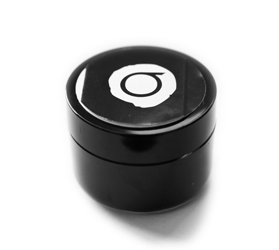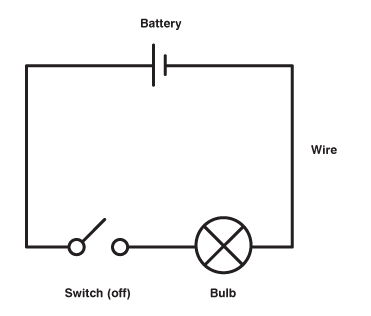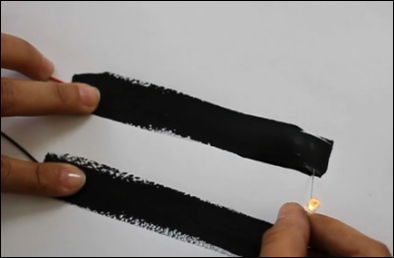Look! No wires. Learning about electricity without wires.

Having attended the Design and Technology Show this weekend at Birmingham's NEC, I came away with an amazing product which I think revolutionises our understanding of electricity and electrical circuits whilst unleashing our creative minds to make some cool things.
It's black and comes in a small jar.
The product is a glue-like paint which just like paint, can be used on any surface you can think of. It dries like glue and is adhesive, which means it can be used to hold things together. However, it also has conductive properties, which makes the product really exciting when combined with electrical components.

As a teacher, teaching electrical circuits to young children often leads to many misconceptions. Whenever we see a circuit presented in a book, very often it's shown as either circular or rectangular. That's difficult to translate into a bulb, battery and a bunch of wires that take on a life of their own.
Over at the Bare Conductive stand I was captivated by Bibi Nelson who demonstrated painting two parallel lines on some paper. She attached an LED light to one end of the parallel lines and placed a 9V battery which straddled across the two lines at the other end. The LED lit as electrical energy transferred through the paint to the LED. Brilliant.

Of course the conductive paint can be used to make any shapes you like and so the concept of a standard rectangular or circular circuit is replaced by an understanding that circuits simply need to be complete and join up.
Not only can the paint be applied to paper, but it can be painted on walls, concrete, glass, fabric and even skin! (though you'll need a pot of Bare Skin instead!) There are numerous ways of connecting the painted surface to buzzers and batteries, perhaps using paper clips, adhesive copper strips, crocodile clips and even snaps for fabric projects.
Bare Paint is very versatile and there are some really cool projects that you can have a go at making on the Bare Conductive website. Take a look for yourselves and see if there's something you think pupils would be equally amazed by.









Comments
arrowe
29 November 2011 - 1:20am
Permalink
hi
hi Mr Jonathan how are you it has bin a long time cent i talk to you.
from your friend waid arrowe Moore
Add new comment